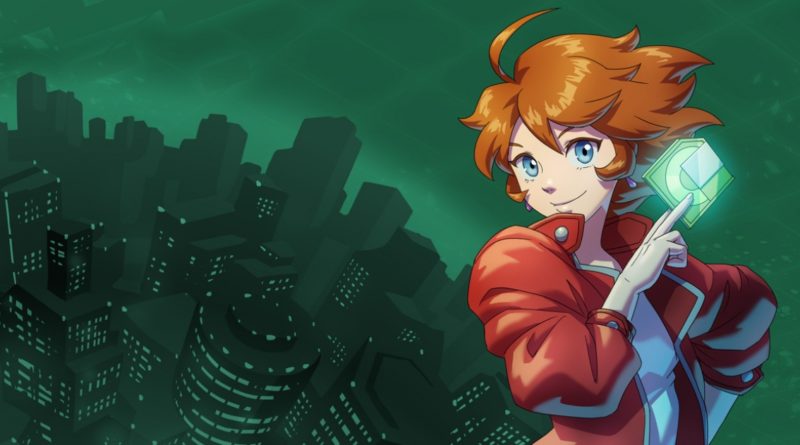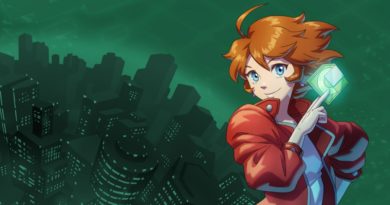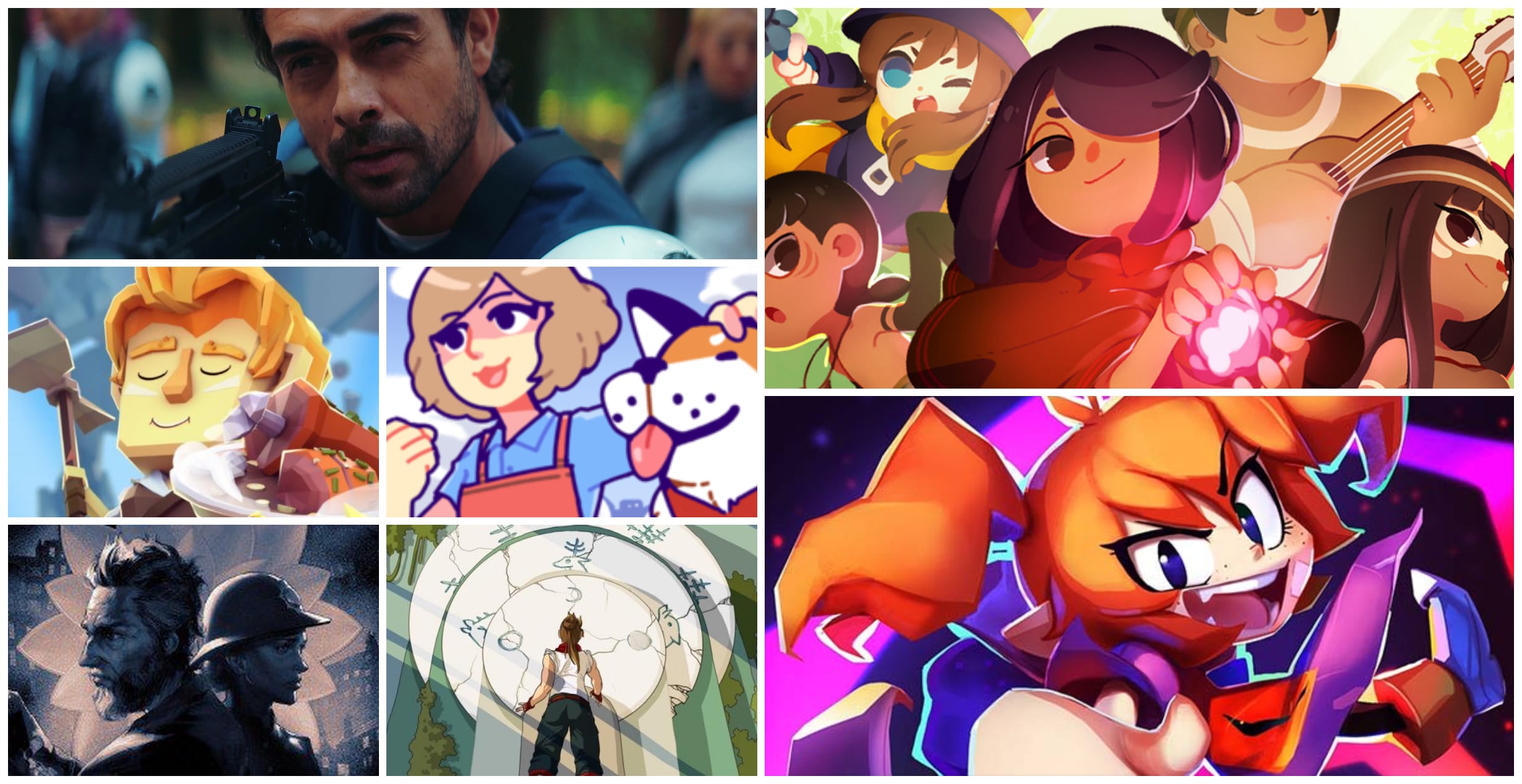Jack Move Review (PC) – I Like To Move It Move It
Jack Move is a bytesize JRPG for those with a bit less time for gaming. But is it electrifying, or a glitch in the matrix? The Finger Guns Review:
Jack Move arrives at the best time, just before a pack of great and grand RPGs hits shelves this autumn season. So if you’re anything like me and looking forward to that RPG fix, but you’re also impatient to get started, this is the perfect sustenance. It’s corny eighties cyberpunk fun in tone and a turn-based RPG in mechanics, propped up by a fun and fast-moving story that’ll keep you interested. And it’s retro in all the best ways. The lead, Noa, moves and sways like Jazz Jackrabbit. The music slaps like Coolspot or Sonic siphoned through New Jack Swing.
It’s got a vibe from the eighties that I think we often forget about in the light of more current Stranger Things styles and such – that of Bubblegum Crisis, and Gunsmith Cats, Toe Jam and Earl, and LucasArts. If any of that is calling to you and hitting that nostalgia bone hard, then give Jack Move a look. It deserves it before it gets lost amongst the larger RPGs waiting to drop.
Jack Move stars Noa, a young female hacker making ends meet on the streets doing odd jobs, breaking and entering and hacking. She makes enough to pay rent late, and manages to remain carefree with little to no responsibilities on her shoulders. That’s the way she likes it. The game starts with a little break-in and theft, while you go through the tutorial and learn combat basics (this also forms the ICE Breaker demo that was on Steam) but the story really starts when the next night.
Noa’s estranged father Abner calls out of the blue, asking for help. It seems Monomind, the mega-corporation big-bad of the piece, is breaking down his door, intent on his research. Noa brushes him off (see childhood trauma), but then moments later Monomind’s goons and unhinged CEO Krall are in her apartment, still looking for her father’s research. Clearly they couldn’t find it.
Noa is knocked unconscious, but when she comes-to she’s fired up and hungry for some payback. She enlists the help of her hoverchair-bound friend and cyber-handler Ryder and sets out to find her father’s research before Monomind does. Not to find her father. That might be a welcome side effect.
So begins Jack Move’s mystery, taking you from one side to the other of Cash City trying to stay one step ahead of Monomind, and to find out what this research even is, why Monomind wants it, and maybe how much it’s worth.

Jack Move is primarily an exploration and story-driven RPG experience with a turn-based battle system and random encounters. Yes, you read that right, random encounters. I told you it was retro. More on that in a minute. The city you spend your time in is a lovely pixel art expanse of all the cyber locales you could want and a lot of freedom over where you go. Sometimes too much freedom – very near the start I didn’t heed a few NPCs warning me that the river was dangerous, wandered into a new area only to be delivered an intense and brief smackdown at the hands of enemies far beyond my level.
For the most part, it’s a case of following the story, gaining a dialogue clue as to where to go next, and then having a little explore to find your way there. Jack Move is more retro again in that it doesn’t lead you to your next destination by the nose, or have quest markers or even a map. You need to learn the city bit by bit, and use your common sense to locate the next area.
Early on, for instance, I was told to find the old man’s house, and the clue was that it was on the other side of the slums. Well, I need to find the slums first, then what’s the other side of them, and is it the other side from where I was? In the end I went round a few screens of the city until the slums became very apparent and the other side presented itself. It’s a case of speaking to NPCs and actually reading what they have to say. It’s that ‘exploration’ angle that developers want us to rediscover in a video game market swollen with quest markers.
And it’s worth doing – the dialogue is fun, the NPCs have interesting world lore to tell you and secrets to uncover. The script is really good, full of fun banter and all the invented hacker slang you could want. The script and Noa’s character really help to push forward a relatively normal narrative, and make it into something special.
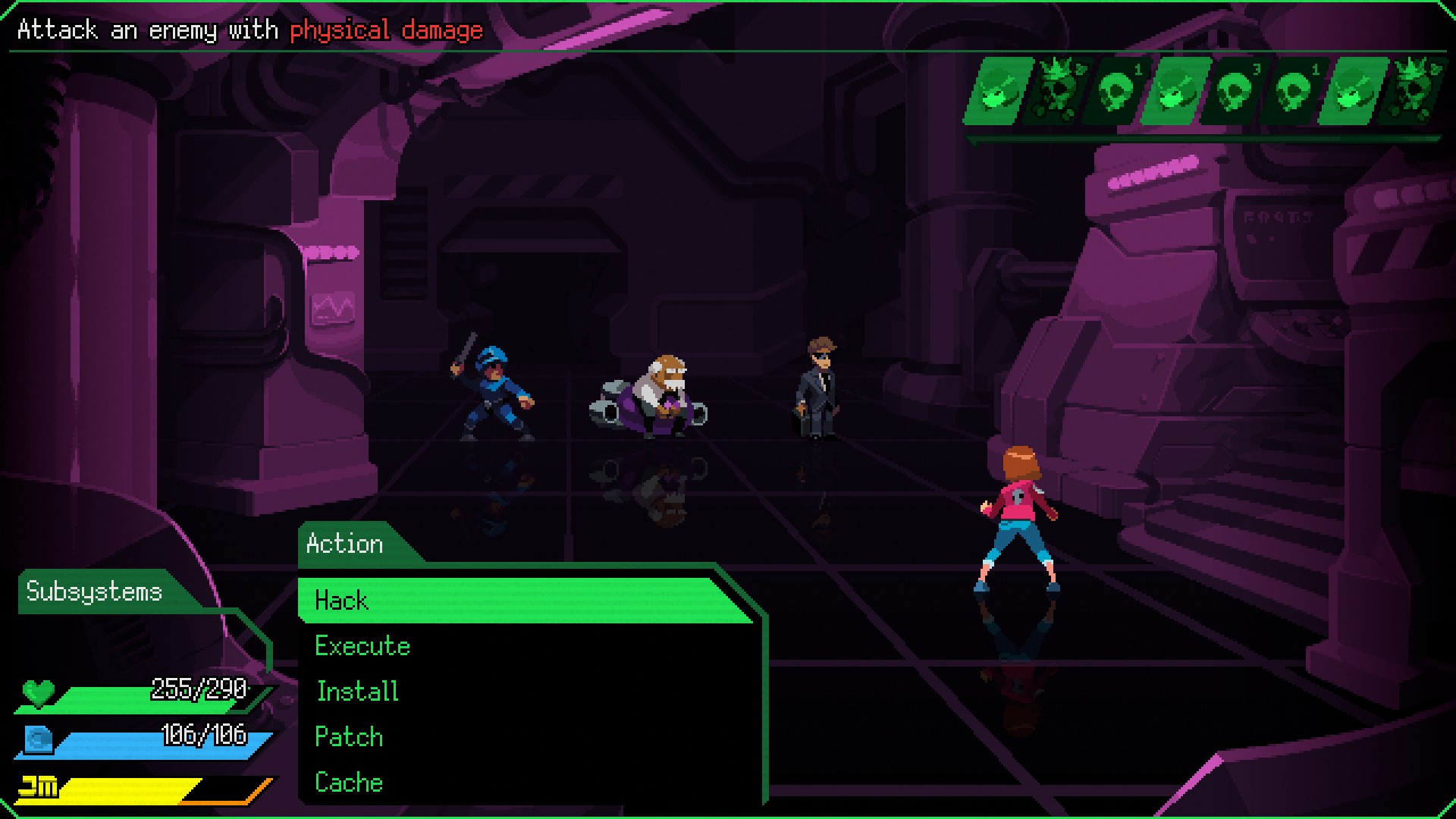
So those pesky random encounters. Well don’t worry because the combat is a lot of fun, and the rate of battles is quite infrequent. You can turn them off completely, although there is a warning that you’ll end up at a boss severely under-levelled and have to grind some levels. So it’s in your best interest to do them as you go. Perhaps use the function to explore an area for items you need, or to escape if you are low on health. No need to struggle through battles on low health if you can switch off encounters until you’re in a safe locale. The game also provides a little danger indicator, which builds up to how likely an encounter is.
Noa comes equipped with a VMS Virtual Memory System hack device that throws every battle encounter straight into virtual reality, with obligatory Tron lines cycling across the floor in green neon, like retro cyberspace. And Jack Move goes all in on the cyber here. You can hack enemies, but not with an axe, with your software. You can install upgrades and different attack types to better hurt enemies weak to one of a triple element rock-paper-scissors type mechanic. And the elements are cyber too – Wetware, Cyberware and Electroware. You can use software patches to get instant item-like buffs and heals. You even have a certain amount of RAM in the system and may need to use up turns to swap out your loadout if your RAM is full.
Turn-based battles see Noa face off against a variety of corporate goons, henchmen, dogs, bots and plenty else. Everything has a chip, so everything can be hacked. An issue I had early on with the combat, was that although you can scan the enemies for weakness, if you didn’t it was relatively tricky to work out what element was the correct one. I would usually go by their colour scheme, but this wasn’t always fool-proof, and because my playstyle is to loathe using up a turn scanning, I would end up wasting two shots getting the wrong element before finding the right one. Maybe that’s on me.
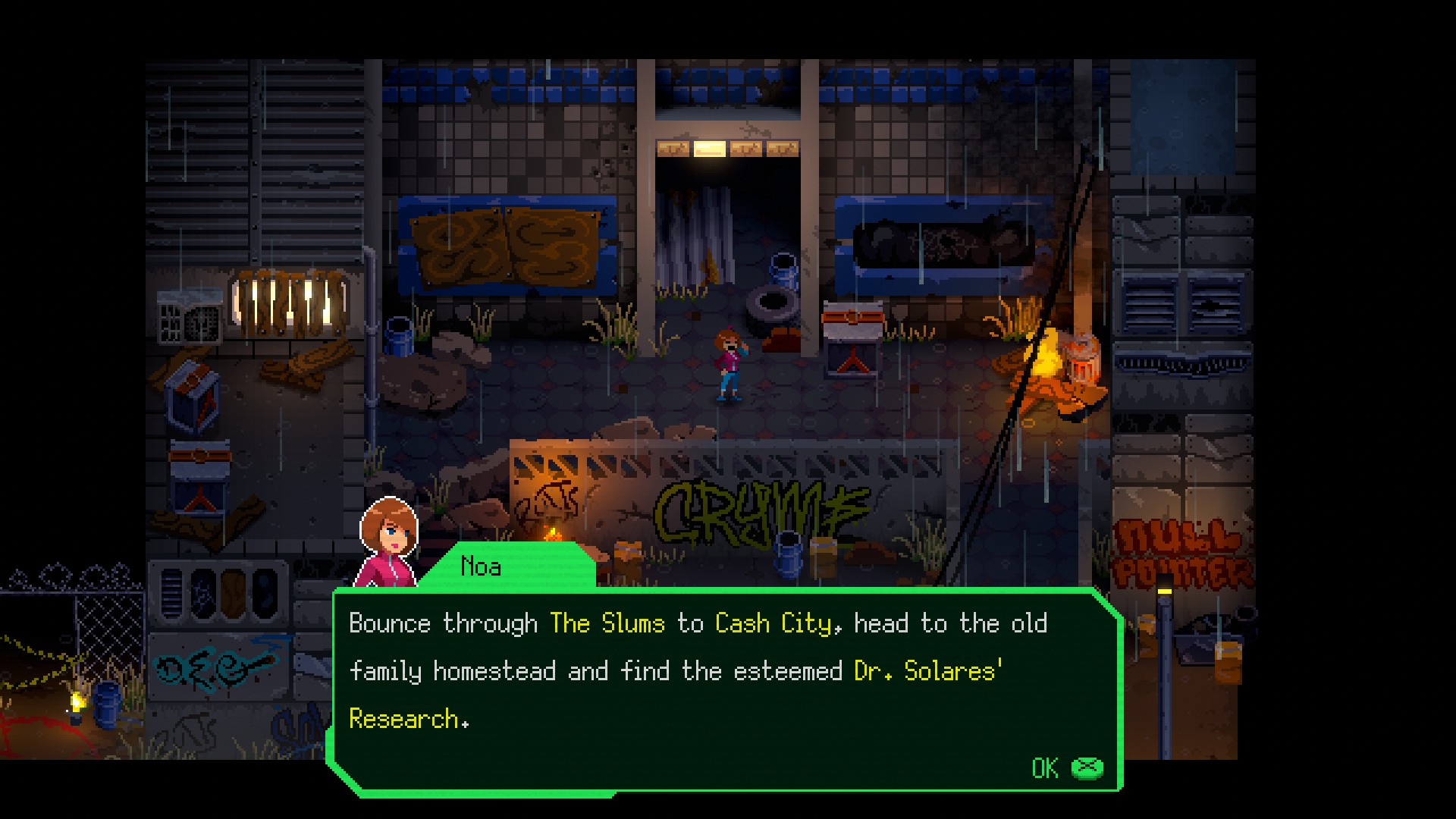
Jack Move has a welcome order of attacks turn-list in the top right of the battle screen, which you can use to plan your resources and attacks accordingly, which adds a certain amount of strategy. Harder battles towards the end of the game need careful management of the turn-list because you really are on your own. If you don’t heal yourself, no one else will.
Maybe you wondered where the name Jack Move comes from – well it’s here in combat. Build up enough attacks and take enough damage and you can unleash a Jack Move – jacking in Matrix-style, hitting some dance mat rhythm game direction keys and hitting with something like 5 times your normal attack power. Nice! There’s four to collect, one for each element, and one physical only. The balance is great here, as you will build to a Jack Move every three fights or even more frequently, so you’ve often got a power move in the wings to even the odds in harder fights.
Levelling comes with battle experience as you might expect, but Jack Move employs the use-it-and-it-will-level mechanic. So if you use the ‘Glitch’ move lots, then the Glitch move itself will level up. If you don’t use things they don’t level up at all, which can be tough if you suddenly need them on a new enemy type. If you die you can continue, as if you’ve put a quarter in, but the ‘punishment’ is losing 25% of your current exp bar. You also get your health and skill point gauge filled to full on every level up, and it’s not hard to time these to the end of an area, just before you face off against the next boss.
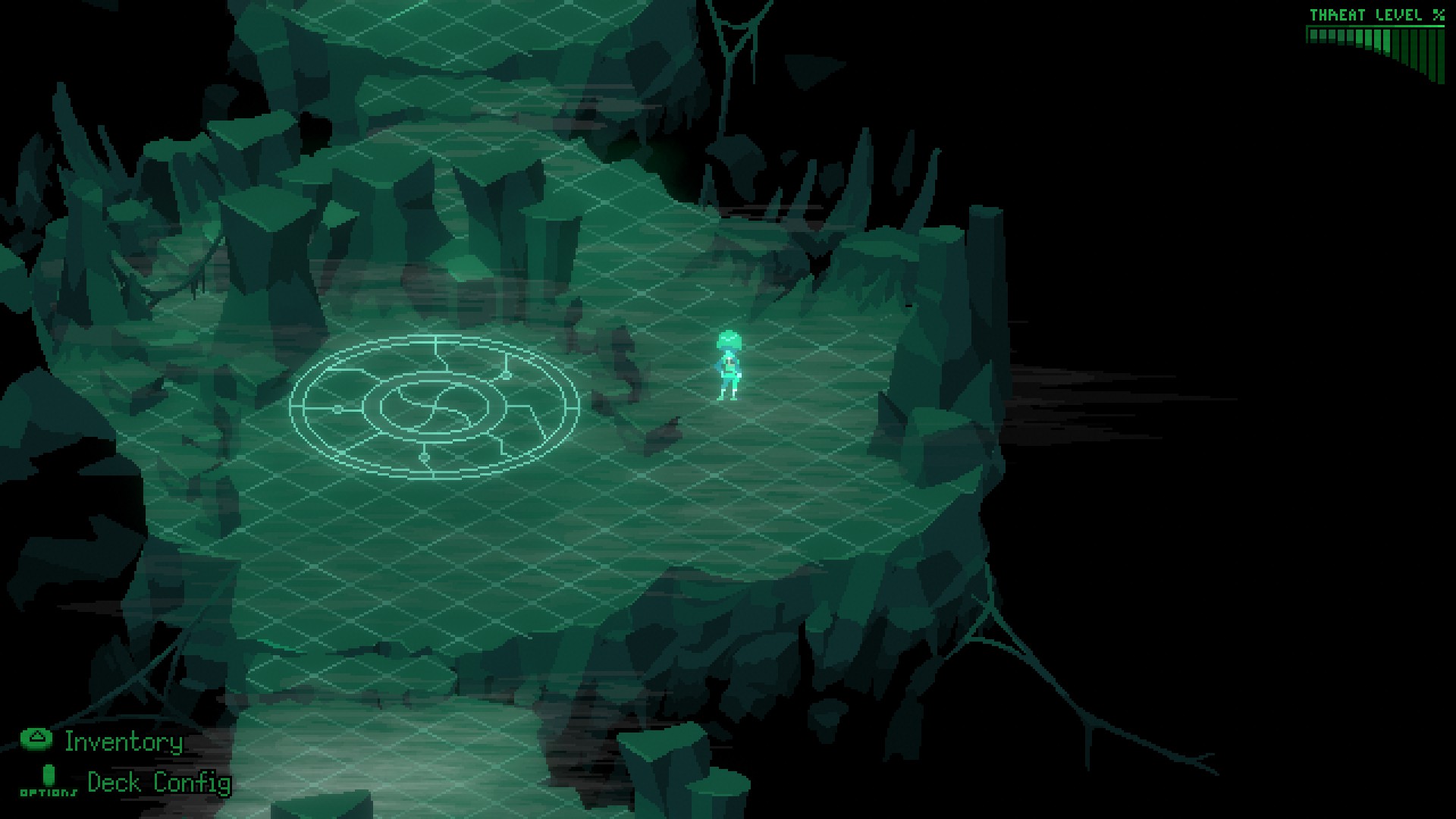
Jack Move is full of simple but lush colourful pixelart, and it really excels in animation. The swaying and limber moves that Noa employs, and the animation of her and her attacks is top-notch. I said it before, but she kinda moves like Jazz Jackrabbit, or a more platform-game type heroine, which is fun in this environment. You can take a look at the wonderful animated trailer at the top of this review too, to get a flavour of the game’s vibe, although I didn’t notice any more of this animation in-game. It’s a shame, with all the retro goodness, I was expecting FMV cutscenes of animated cartoon shenanigans – it’s expensive stuff though, animation.
Though the dialogue is great, the game does not have any voiceover, so be prepared to read. If you like your RPGs, you should be well used to that. But instead of speech, Jack Move has a different feast for your ears. The music is bouncy and corny, like Coolspot and New Jack Swing in a cyber setting. The soundtrack has that Va11-Ha11a future funk vibe that really defined that game – musak, but good. I get the feeling Jack Move’s soundtrack will go on repeat for me should it get a proper release.
A succinct and well-told story, Jack Move’s character-writing and dialogue really endear you to Noa early on, and her little adventure is a short and satisfying bitesize JRPG for players with a bit less time on their hands. You can smash out the campaign in about 7 hours, and maybe a couple more if you get lost a lot, and find all the items for the different NPCs. Its combat is fun, simple and non-taxing, but still with enough depth not to grow stale over its short runtime. And artistically and musically it’s a treat all round.
A succinct and well-told story, Jack Move’s character-writing and dialogue are endearing, and its pixel art charms. It’s a short and satisfying bitesize JRPG of around 8 hours for players with a bit less time on their hands or perfect in between 100-hour behemoths.

Jack Move is out now on PC via Steam and launching on September 20th for Nintendo Switch.
Developer: So Romantic
Publisher: HypeTrain Digital
Disclaimer: In order to complete this review, we were provided with a promotional code from the publisher. For our full review policy, please go here.
If you enjoyed this article or any more of our content, please consider our Patreon.
Make sure to follow Finger Guns on our social channels. Twitter, Facebook, Twitch, Spotify or Apple Podcasts – to keep up to date on our news, reviews and features.
